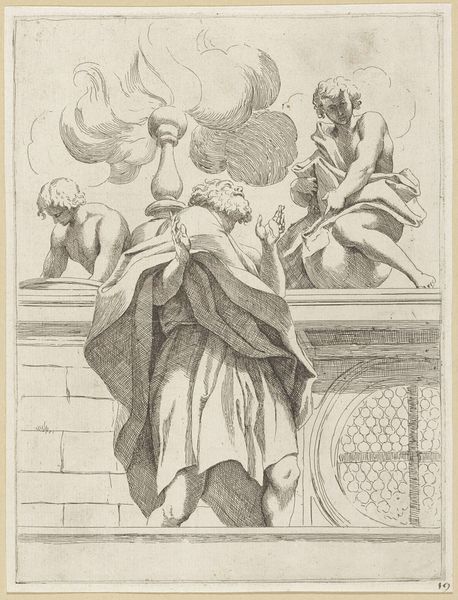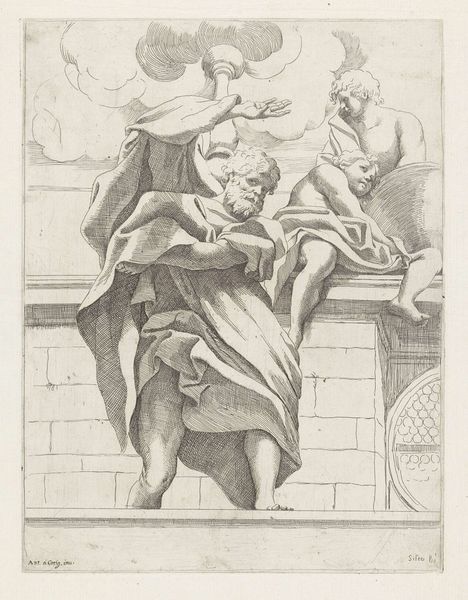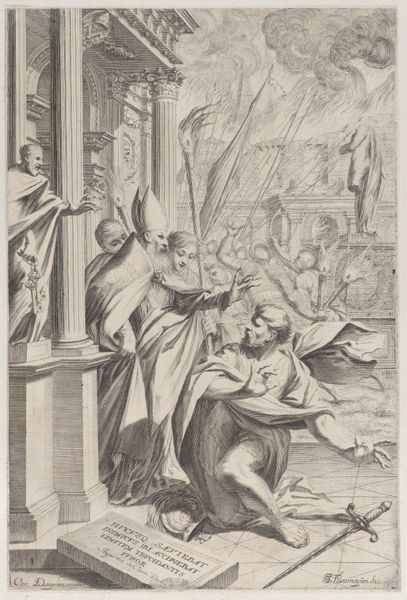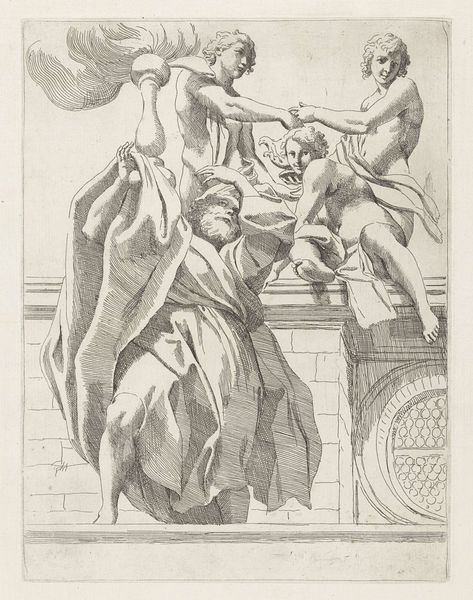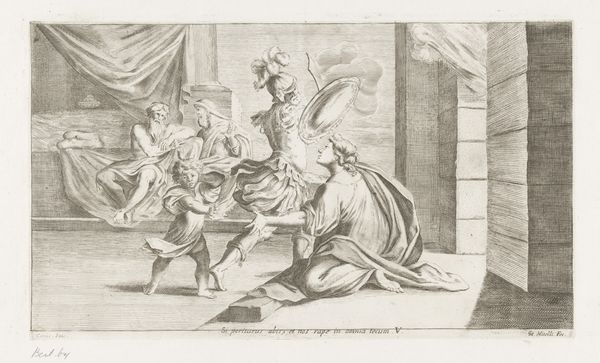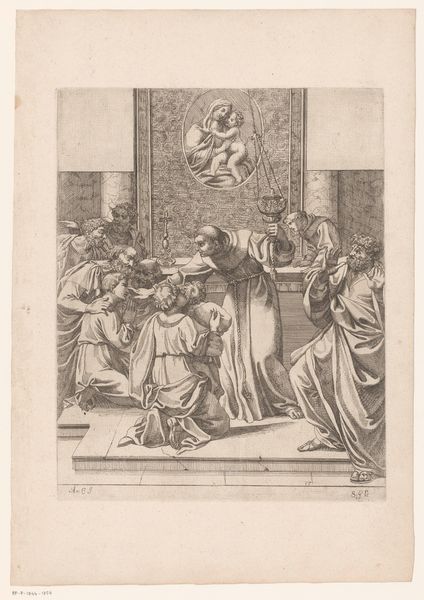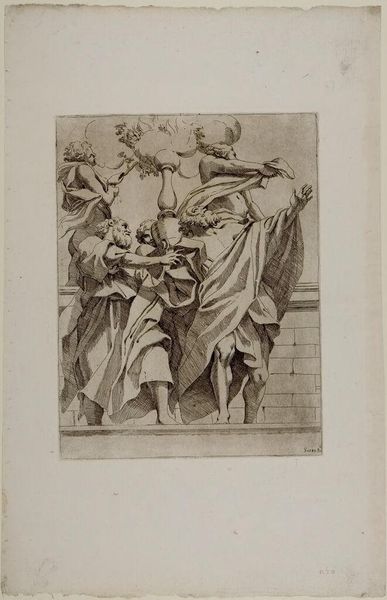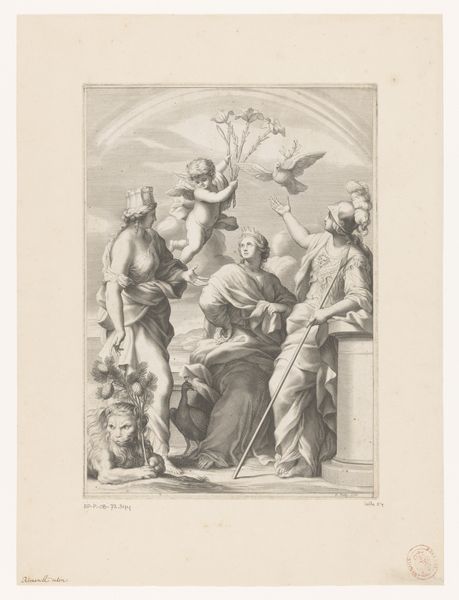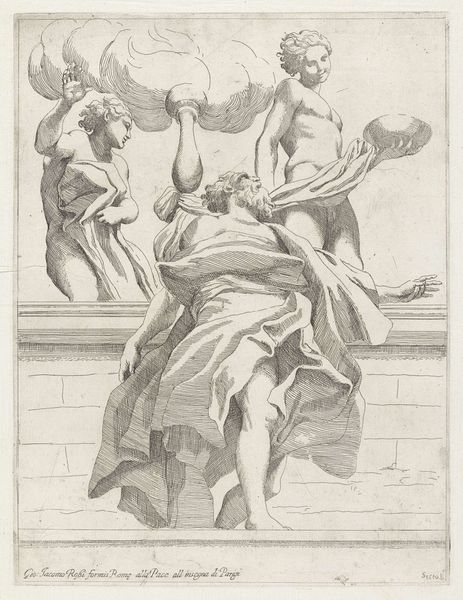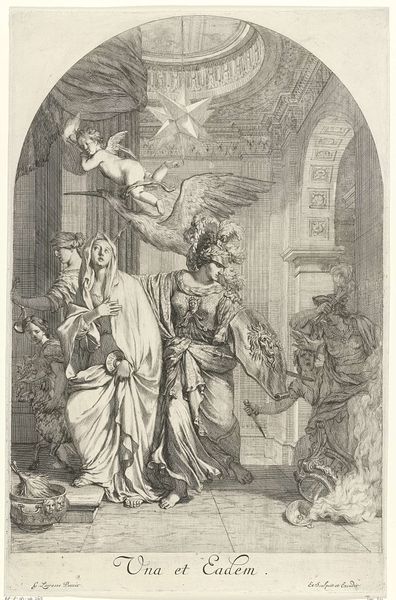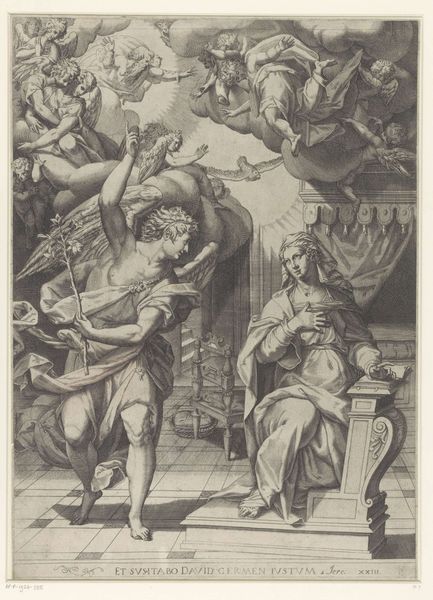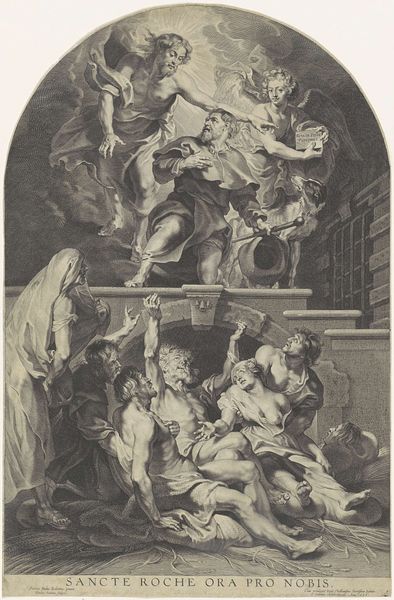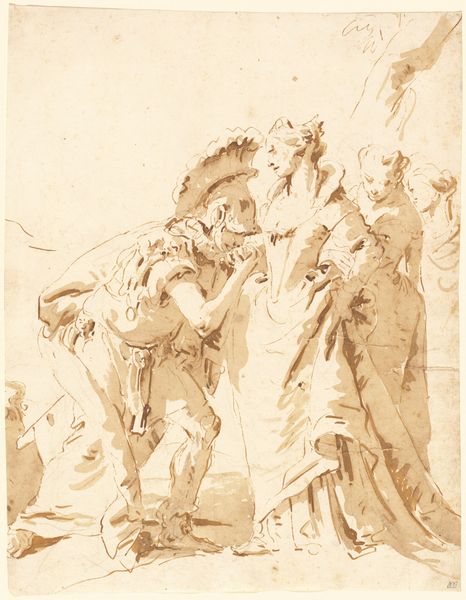
print, etching
#
baroque
# print
#
etching
#
figuration
#
pen-ink sketch
#
sketchbook drawing
#
history-painting
Dimensions: height 275 mm, width 209 mm
Copyright: Rijks Museum: Open Domain
Curator: This intriguing print is called "Prophets with Three Angels," an etching attributed to Sisto Badalocchio, made sometime between 1591 and 1647. Editor: It has a sketch-like quality; the figures feel almost as though they're emerging from the page. The dramatic poses of the figures and heavy drapery remind me of theatre. Curator: It’s history painting in miniature, if you will. Prints such as this played a key role in circulating visual ideas around Europe at this time. Badalocchio’s mastery of etching allowed for detailed and expressive lines. Think of it: a relatively inexpensive way to own or distribute artwork depicting important biblical themes. Editor: You know, the cross-hatching that creates shading – look at how it builds up in the folds of the robes – it speaks to a very physical, almost tactile approach. Was he trained as a painter initially? I'm wondering if he thought of the copper plate like a painter’s canvas? Curator: Absolutely. Badalocchio initially trained as a painter and printmaker under Agostino Carracci in Bologna, Italy, which explains that painterly sensibility you noticed. These prints were not merely reproductions, but artworks in their own right, judged by the quality of the engraving and the choices made in translating the original design. It's easy to overlook their importance in art history today, focusing solely on paintings or sculptures made for wealthy patrons. Editor: And I suppose it served as advertising for a painter’s style, expanding an artist's reputation? It also granted other, less wealthy, patrons access to something similar. The Church might also use them to disseminate iconography. Curator: Precisely! Prints functioned as vital tools for propagating both religious and political messages during the Baroque era, reaching broader audiences beyond the elite circles. And beyond any overt messaging, I’m interested in what processes might've been used for producing these prints quickly to reach wider audiences, how it fits within the division of labour that defines early workshops. Editor: I suppose both interpretations are valid, as there are social ramifications in creating artwork and the materiality to back it. Now, knowing how these prints circulated changes how I view it completely. Curator: Indeed. Studying this work offers a more nuanced picture of artistic production and its far-reaching impact on society and culture. Editor: Agreed. A seemingly simple print, yet brimming with historical context and rich with material consequence.
Comments
No comments
Be the first to comment and join the conversation on the ultimate creative platform.
